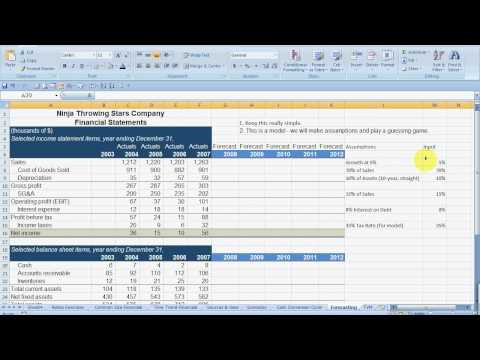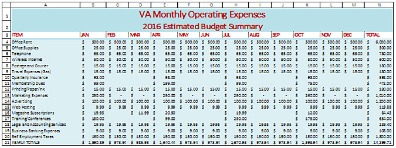If you recently attended webinar you loved, find it here and share the link with your colleagues. F&A teams have embraced their expanding roles, but unprecedented demand for their time coupled with traditional manual processes make it difficult for F&A to execute effectively. Finance and IT leaders share a common goal of equipping their organizations with ways to work smarter to enable competitive advantage. This intersection between CFO and CIO priorities is driving more unity in terms of strategy and execution. This post is to be used for informational purposes only and does not constitute legal, business, or tax advice. Each person should consult his or her own attorney, business advisor, or tax advisor with respect to matters referenced in this post.
- Account names reflect each of the business accounts you’re reporting on (such as bank fees, cash, taxes, etc.).
- Use a chart of accounts template to prepare the basic chart of accounts for any subsidiary companies or related entities.
- You can use the following example of chart of accounts to set up the general ledger of most companies.
- Learn how a FloQast partnership will further enhance the value you provide to your clients.
- This provides an insight into all the financial transactions of the company.
- Companies come to BlackLine because their traditional manual accounting processes are not sustainable.
Accounts receivable, aka AR, represents the balance of money due to a firm for delivered but unpaid goods or services delivered to the customer. The COA is a listing of all existing accounts
including a description of the specific use of
the account. The GL contains the financial
records of the organization, including the
COA, and maintains the debit/credit balance
information. The cash flow statement (CFS) measures how well a
company generates cash to fund its debt obligations,
cover its operating expenses, and fund additional
outside investments.
Chart Of Accounts For The Small and Medium Business A Complete Guide
In the European union, most countries codify a national GAAP (consistent with the EU accounting directive) and also require IFRS (as outlined by the IAS regulation) for public companies. The former often define a chart of accounts while the latter does not. However, since national GAAPs often serve as the basis for determining income tax, and since income tax law is reserved for the member states, no single uniform EU chart of accounts exists. A company’s organization chart can serve as the outline for its accounting chart of accounts. For example, if a company divides its business into ten departments (production, marketing, human resources, etc.), each department will likely be accountable for its own expenses (salaries, supplies, phone, etc.). Each department will have its own phone expense account, its own salaries expense, etc.

Bench assumes no liability for actions taken in reliance upon the information contained herein. At the end of the year, review all of your accounts and see if there’s an opportunity for consolidation. The complete Swedish BAS standard chart of about 1250 accounts is also available in English and German texts in a printed publication from https://kelleysbookkeeping.com/how-to-prepare-and-analyze-a-balance-sheet/ the non-profit branch BAS organisation. We follow strict ethical journalism practices, which includes presenting unbiased information and citing reliable, attributed resources. Our team of reviewers are established professionals with decades of experience in areas of personal finance and hold many advanced degrees and certifications.
What Is the Use of a Chart of Accounts?
Thus, the chart of accounts begins with cash, proceeds through liabilities and shareholders’ equity, and then continues with accounts for revenues and then expenses. The exact configuration of the chart of accounts will be based on the needs of the individual business. A company’s chart of accounts is a comprehensive list of all the transactions that a company has undertaken during the course of a particular accounting period. It serves as an index where you can find all your company’s financial activity in one place. A chart of accounts helps businesses gain a bird’s eye view over five primary account types – revenue, expenses, assets, liabilities, and equity. The order in which your accounts appear in your financial statements is the order in which they will be shown in your chart of accounts list.

That means, in most cases, all your asset accounts will use the number 1, followed by four numbers (1-XXXX), while your liability accounts would start with the number 2 (2-XXXX), and so on through the numeric list. This is a practical structure for businesses that manufacture or sell products and is a good fit for those looking for added specificity in their Chart Of Accounts structure. Again, using the multiple three- or four-digit sub-account designations will provide more in-depth transaction tracking and overall fiscal transparency.
Swedish BAS chart of accounts layout
A gap between account numbers allows for adding accounts in the future. Of crucial importance is that COAs are kept the same from year to year. Doing so ensures that accurate comparisons of the company’s finances can be made over time. Yes, each business should have its own Chart of Accounts that outlines the specific account categories and numbers relevant to their operations. Not always employed, this
designation is used to control
the order of accounts as
they appear in the financial
statements and can be
beneficial in making them
generally simpler to decipher
and more actionable. Read how in just a matter of weeks, Qualys leveraged FloQast to standardize the close process and organize controls and documentation for a more simplified SOX compliance.

BlackLine delivers comprehensive solutions that unify accounting and finance operations across your Oracle landscape. BlackLine’s foundation for modern accounting creates a streamlined and automated close. We’re dedicated to delivering the most value in the shortest amount of time, equipping you to not only control close chaos, but also foster F&A excellence.
How Is the Chart of Accounts Organized?
The asset ledger is the portion of a company’s accounting records that detail the journal entries relating only to the asset section of the balance sheet. Assets represent resources with economic value anticipated to deliver future value to the organization. Each account is assigned a “type” that identifies how a transaction is to be coded, indicating where
it should appear in the financial statement.
